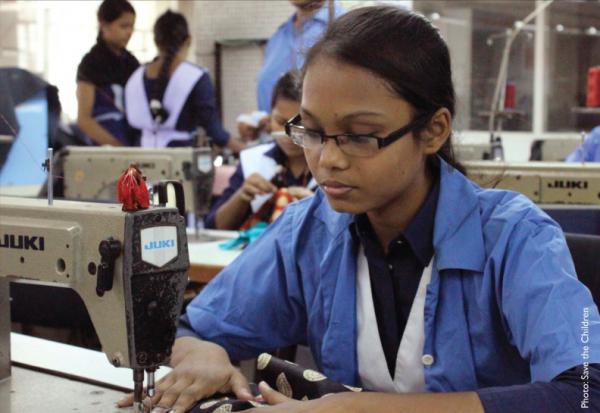
Child poverty brings intergenerational sustainability to livelihoods interventions and long-term benefits not only for the individual child but also for national economic and social development. Livelihood interventions generally struggle to integrate child participation because the direct beneficiaries tend to be parents or carers of children and children are expected to benefit from the increased skills, knowledge and income that the project gives their parents. Evidence has shown, however, that these benefits do not always pass on automatically to the next generation. Child poverty programmes, when designed and delivered well, bring a new lens to livelihoods programs and can effectively increase the nutritional, health and educational status of children and reduce the risk of abuse, exploitation and neglect.
Priorities in new CSP 2016-2018
The child poverty work falls under three broad themes: child-sensitive livelihoods, child-sensitive social protection and adolescent skills for successful transitions.
Under child-sensitive livelihoods, our strategy is to build on our experiences and strengths so far to implement new high-quality nutrition-sensitive livelihood interventions that generate strong evidence of impact. A central piece of this is the flagship Suchana coalition, led by Save the Children, which couples comprehensive local-level nutrition-sensitive livelihood programs and research with national advocacy to improve nutrition. We will build and strengthen partnerships with a wide range stakeholders that include government, development partners, research institutions, and the private sector. Within the ongoing livelihoods and food security programmes, we plan to shift towards a more market-driven approach as opposed to previous programmes which were more input-heavy.
A central piece of our current strategy is to promote child-sensitive social protection. At a local level, we will continue to pilot our child-sensitive social protection programme. In the middle of our new strategic period, we will seek to use evidence from our programme to persuade government to further incorporate our learning from our community based targeting and budget allocations for child-sensitive social protection in local government procedures. We will also seek to institutionalise participation and consultation with adolescents in these processes. We will increasingly work in deprived urban areas, where child-sensitive social protection interventions are weakest. We will continue to build alliances and partnerships with donors, and strategic partners to advocate for, and engage in, policy for the better inclusion of child-sensitive community based norms and child-sensitive interventions into the National Social Security Strategy, as well as safety nets such as VGD and VGF, Child Grant, and Primary and Secondary School Education Stipends.

